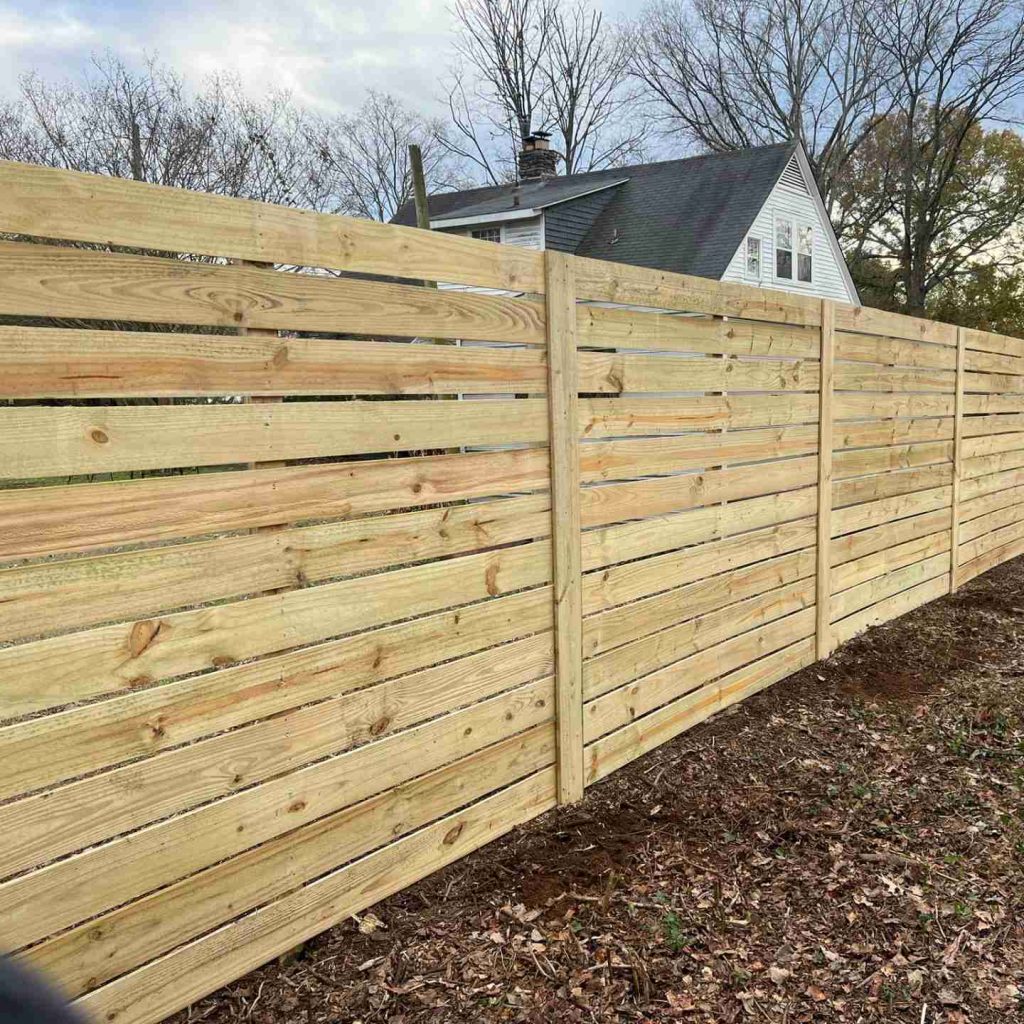How to build a fence in Nashville
by siteadmin

You might breathe a sigh of relief after installing the long-awaited fencing in your yard. How did you manage to live without it for so long? Fences can instantly create privacy in your backyard paradise. They keep children and pets safe. A fence can also be a beautiful object on its own. A well-made fence tends to make neighbors get along better. It is possible to build a fence yourself.
You may be surprised to find that constructing a Privacy Fence is easier than you thought. The project of building a fence requires only a few simple materials and tools. This fence-building project is easy to complete with materials available at most home centers. There are many tools and materials that can make this job easier and faster.
When to Build A Fence
Fence-building is not weather-dependent. It is more comfortable to build in warm, dry seasons. You can dig a hole as long as you can break the frost line in the soil (if there is any). Even in moderate rain, concrete can be poured in bad weather.
Safety Considerations
It is difficult to build a fence without a partner. Ask them to help you lift the heavy panels and posts. Each fence panel can weight up to 110 pounds. They are also unwieldy, and difficult to control.
Project Metrics
Working time: 2 Hours per 8 feet
Total Time : 3 Hours
Intermediate Skill level:
Material Costs: $100 – $125 per 8 feet
What You Will Need
Equipment/Tools
Tape Measure
Twine and stakes
A laser level
Post hole digger
Pencil
Eye and hearing protection
Work gloves
Marking paint
Speed Square
Circular saw
Cordless drill
Electric miter saw
Hammer
Shovel
Materials
Fence panels
Fence posts
Quick-setting concrete mix
All-purpose gravel
Fence post caps
#8 2-1/2 inch Exterior Screws
Instructions
Talk to Your Neighbor About the Fence
It is best to have a friendly conversation with your Nashville handyman neighbor before building a boundary fence. 1 Regulations on sharing costs of the fence vary from community to community. Check your title and any other documents related to the purchase of the house to see if there is a easement in the area you plan to build the fence.
Get a Permit for Fence Construction
Your community may require that you obtain a license for your fence company in Nashville. The communities want to ensure that fences do not exceed a certain height (6 feet is usually the standard) and are placed far enough away from public thoroughfares in order to preserve sight lines.
Measure the fence placement
After you've decided where you want the fence to run, hammer the wood stakes every 8 feet into the ground. Just a few inches above ground, run the twine between stakes. If everything looks good, spray the marking paint directly over the twine to create a temporary line.
Call the utility locator hotline and arrange to have the service come to your property. This free service is offered by a group of local utility companies. They will mark the ground in order to identify gas pipes, buried wires and other potential problems that you may encounter while digging.
Dig the Fence Post Holes
Mark with a "X" on the fence line the places where the fence posts are to be installed. The width of the fence panel will determine the placement. Fence panels are usually 6 feet or 8 feet in length. The outer dimensions of these panels must hit the center portion of the fence posts.
Use the post hole digger to dig holes that are about three times the width of the post, and half its length. For example, if you have four-by-four posts that are six feet tall above ground, the holes for these posts should be approximately 9 to 12 inches in width and about 3 feet in depth.
Add the Base Filling to the Holes
Pour around 6 inches of the all purpose gravel into the postholes. You can measure the height of the gravel by extending a tape measure into the post hole and pouring the gravel until you reach your desired height. The tape will easily slip out of the gravel.
Mount the Posts into the Holes
Use one of the four-by-4 fence posts to tamp the gravel base in the hole. Set the fence post in place and hold it firmly. Fill the remaining hole around the fencepost with the dry, quick-setting concrete mix. Fill the hole until the dry mix reaches the ground level.
Use your level to plumb a fence post so it is perfectly horizontal. Hold the level up to the top of the post. Check the fence post from two sides to ensure it is plumb.
Hold the post until the fence is perfectly vertical. Your partner will then pour fresh water into the dry mixture. The mix will harden in about 20 minutes. Wait four hours before continuing.
Attach the fence panels to the posts
Position a fence panel with an assistant between two posts so that the ends of each panel are in the middle of each post. Make sure the panel is level by using your level. Attach the panel to the four by four post by driving screws through the front of the panel as well as the stringer portion. Do this to all the stringers in the panel.
Finishing up: Staining & Post Caps
Staining and protecting your wood fence will complete the project. Even pressure-treated cedar and wood can benefit from additional protection. Attach post caps on top of each fence post. These caps not only add a decorative touch to your fence but also help drain water and prevent the tops from weathering or cracking.
When to Call a Professional
Even the most determined DIYer can be overwhelmed by the simple task of building a fence. The motivation and ability of each person varies. If you want to build a perimeter fence, or another type long fence, it may be best to contact a fence-building service.
You might breathe a sigh of relief after installing the long-awaited fencing in your yard. How did you manage to live without it for so long? Fences can instantly create privacy in your backyard paradise. They keep children and pets safe. A fence can also be a beautiful object on its own. A well-made fence…
Recent Posts
- Expert Cleaners Lexington Shares Essential Tips for Properly Cleaning Hardwood Floors
- Affordable Fencing Solutions: Fence Company Rochester NY Offers Insight on the Cheapest Fence Installations in Rochester, NY
- Exploring the Drawbacks of Duct Cleaning: Insights from Air Vent Cleaning Charlotte
- Exploring the Drawbacks of Duct Cleaning: Insights from Air Vent Cleaning Charlotte
- Glass Governor of Atlanta Unveils Premier Custom Glass and Mirror Services for Commercial Properties: Elevating Aesthetic and Functional Standards
